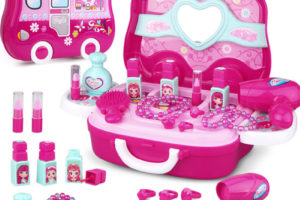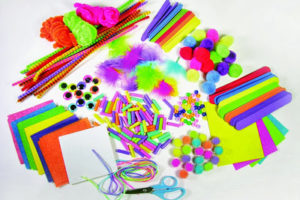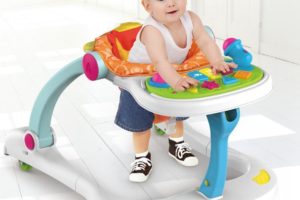Taking your baby out for the first time is a special experience. But you need to ensure that your baby is safe and sound and away from possible hotspots of germs or infections. This is where strollers come into action.
A baby stroller is an essential travel system for most would-be or new parents and a must-have item on their baby registry. But the looming question is, when can the baby sit in a stroller? This post will help you answer that question.
Read on to know when a baby can sit in a stroller, how to use it, and the safety tips to consider before buying one.
When Can A Baby Sit In A Stroller?
Often, babies can start moving around in a stroller at around four months or when they have sufficient head control or can sit upright for extended periods. However, the period varies among babies.
If you intend to take your newborn in a stroller before they can lift their head, ensure that the stroller seat can recline completely to support their head and neck muscles. However, the American Academy of Pediatrics (AAP) recommends against putting your baby to sleep in a stroller if they are younger than four months to reduce the risk of suffocation (1).
Consult your pediatrician if you have any questions or concerns regarding using a stroller for your baby.
When Can You Transition The Baby To A Regular Stroller Seat?
Once your baby can lift their head without help and keep it upright for a certain period, you can turn the reclined seat of the stroller to a seating position. It is important to help your baby develop their gross motor skills to reach these milestones.
What Should You Consider When Buying A Stroller?
Some strollers can recline completely and come with attachments such as an infant-only car seat or a bassinet. A few other things to check when buying a stroller are as follows (2) (3):
- A solid frame and an easy steering mechanism
- It has a five-point harness, multiple recline positions, and a wide base.
- Carry and lift the stroller when opened and folded to ensure it is sturdy but portable.
- Check the brakes and the locking system of each wheel and whether the handles are comfortable for you to operate.
- A large enough storage basket and trunk space
- Attachments such as an infant car seat or a reversible seat to attach with the stroller when required.
- The maneuverability of the stroller, both with and without extra weight
- Ensure that it complies with the US government’s safety standards.
- The warranty and return policy of the product
Check the product description, manufacturer’s instructions, and product details to ensure the stroller suits your baby’s height, weight, and age.
What Are The Safety Measures To Consider While Using A Stroller?
Various types of strollers are available in the market, including jogging strollers, umbrella strollers, and double strollers. However, no matter which stroller you choose, you need to take certain precautions to ensure their safety. Some of these precautions are as follows (4) (5) :
- Do not leave your baby alone and unsupervised in a stroller.
- Do not overload the storage space of the stroller.
- Always ensure you strap in the five-point safety harness.
- Ensure that the folding mechanisms are locked securely and the stroller is sturdy when moved.
- Do not hang baskets or bags on the stroller’s handles, as it may cause it to tip over.
- Do not place extra pillows or blankets in the carriage space to reduce the risk of suffocation.
- Ensure that the wheel brakes are on whenever you stop the stroller.
- Always place the tether strap around your waist.
When you want to take your baby out for a morning or evening walk and spend some quality time with them in nature, a stroller will come in handy. But before you buy a stroller, ensure that it meets your and your baby’s requirements. It is also important to follow the safety precautions mentioned above while using a stroller.
References:


































